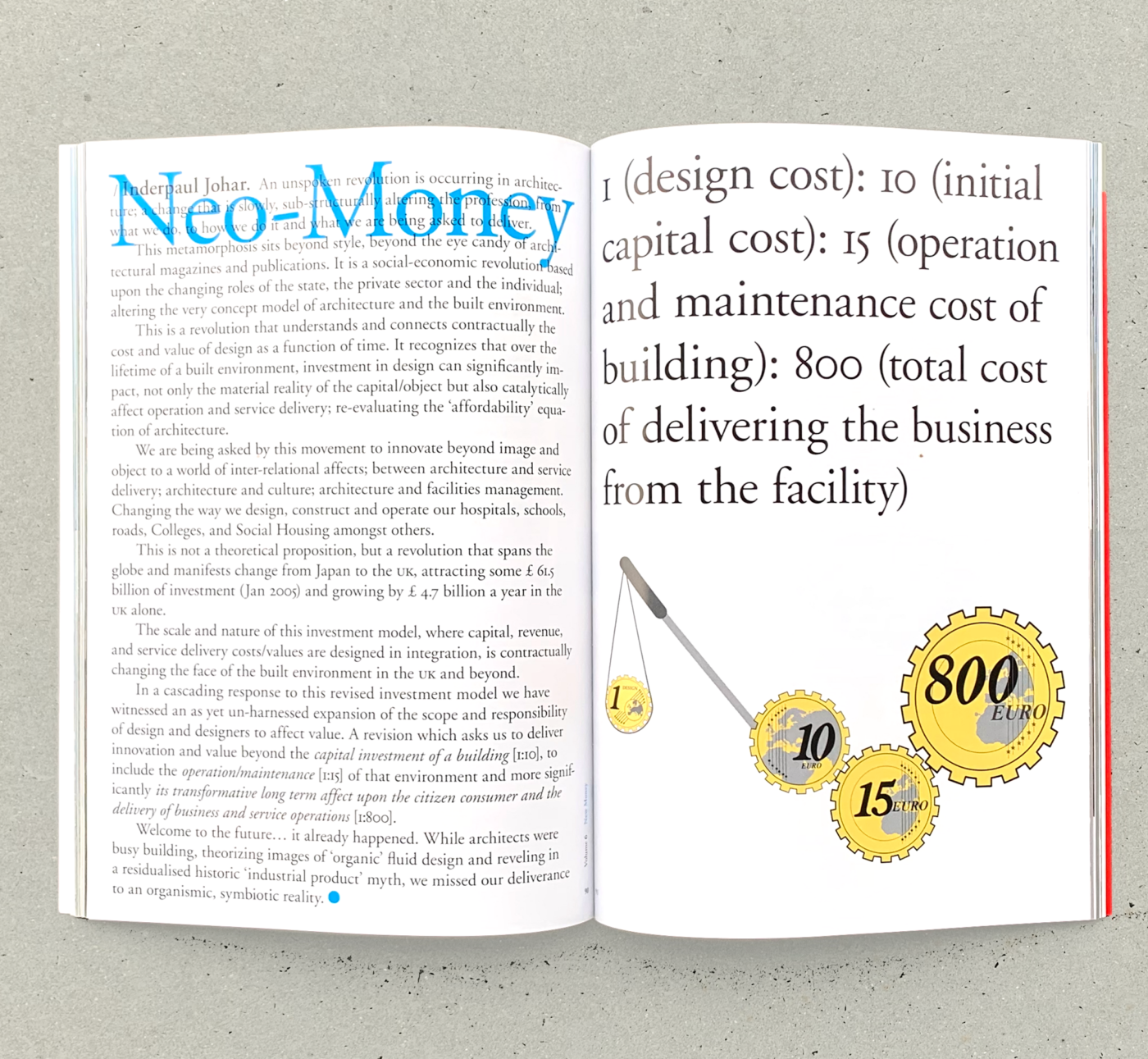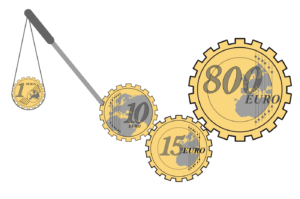
An unspoken revolution is occurring in architecture; a change that is slowly, sub-structurally altering the profession, from what we do, to how we do it and what we are being asked to deliver.
This metamorphosis sits beyond style, beyond the eye candy of architectural magazines and publications. It is a social-economic revolution based upon the changing roles of the state, the private sector and the individual; altering the very concept model of architecture and the built environment.
This is a revolution that understands and connects contractually the cost and value of design as a function of time. It recognizes that over the lifetime of a built environment, investment in design can significantly impact, not only the material reality of the capital/object but also catalytically affect operation and service delivery; re-evaluating the ‘affordability’ equation of architecture.

We are being asked by this movement to innovate beyond image and object to a world of inter-relational affects; between architecture and service delivery; architecture and culture; architecture and facilities management. Changing the way we design, construct and operate our hospitals, schools, roads, colleges, and social housing amongst others.
This is not a theoretical proposition, but a revolution that spans the globe and manifests change from Japan to the UK, attracting some £ 61.5 billion of investment (Jan 2005) and growing by £ 4.7 billion a year in the UK alone.
The scale and nature of this investment model, where capital, revenue, and service delivery costs/values are designed in integration, is contractually changing the face of the built environment in the UK and beyond.
In a cascading response to this revised investment model we have witnessed an as yet un-harnessed expansion of the scope and responsibility of design and designers to affect value. A revision which asks us to deliver innovation and value beyond the capital investment of a building [1:10], to include the operation/maintenance [1:15] of that environment and more significantly its transformative long term affect upon the citizen consumer and the delivery of business and service operations [1:800].
Welcome to the future… it already happened. While architects were busy building, theorizing images of ‘organic’ fluid design and reveling in a residualised historic ‘industrial product’ myth, we missed our deliverance to an organismic, symbiotic reality.